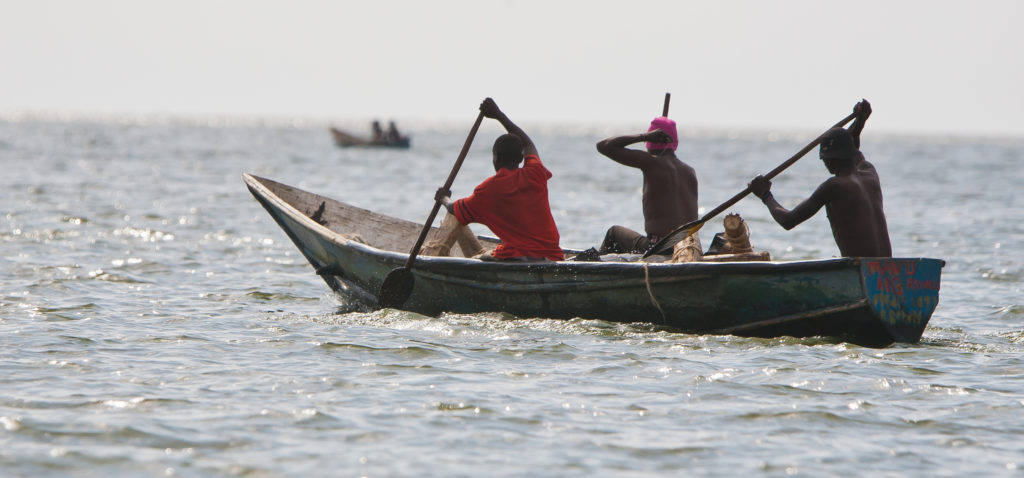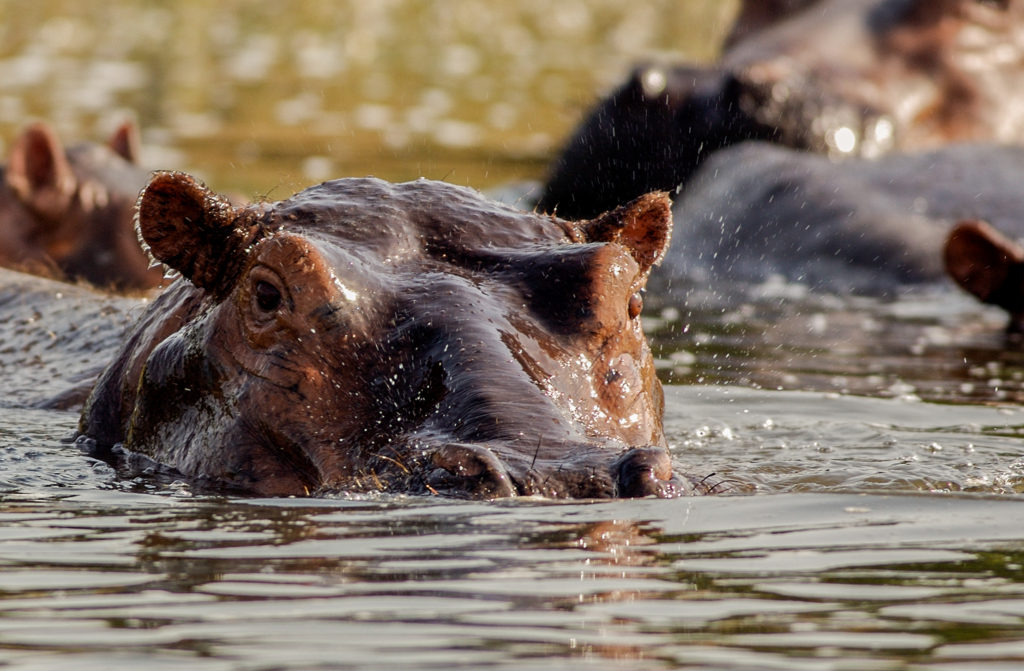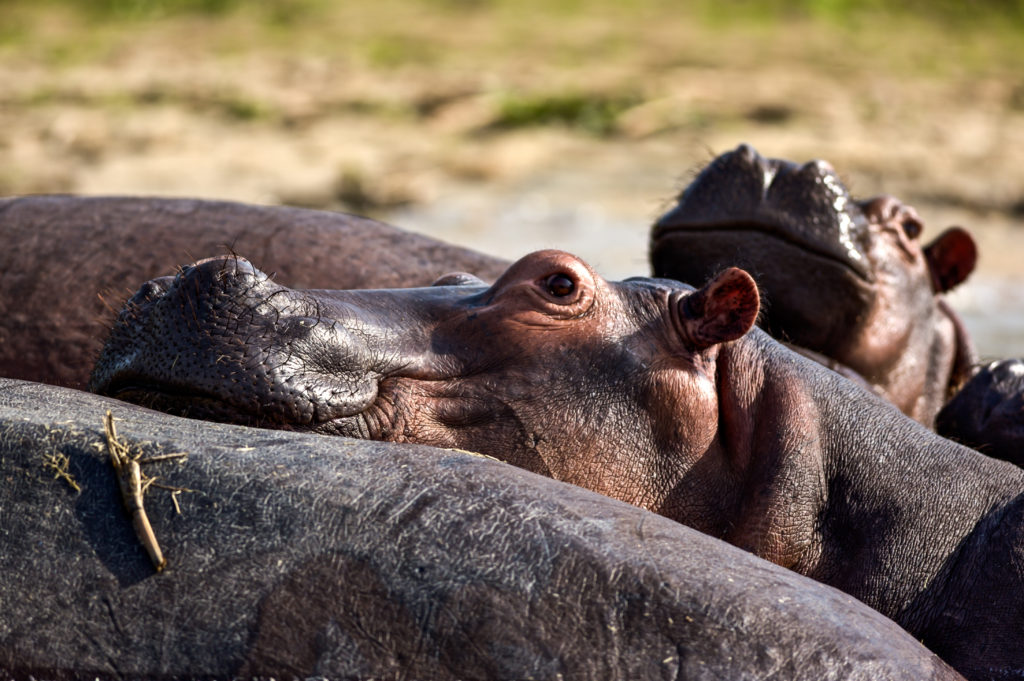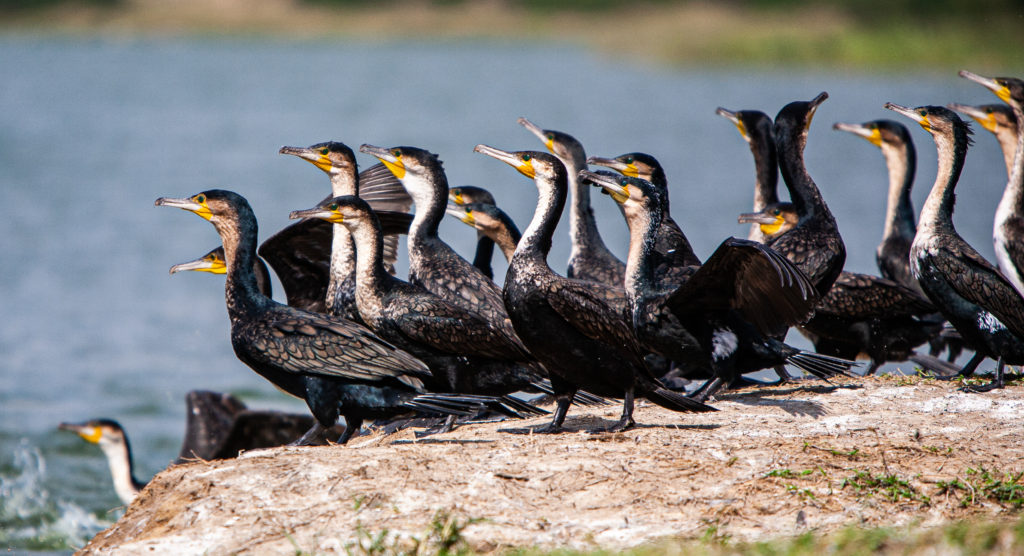The Kazinga Channel
The Kazinga Channel is in the Queen Elizabeth National Park (QENP) in Uganda.
The Queen Elizabeth National Park (QENP)
The QENP is one of the oldest national parks in Uganda. Originally called the ‘Kazinga National Park’, QENP was so named in 1954, to commemorate a visit by Queen Elizabeth II.
The QENP hosts 619 species of birds, considered the second highest of any park in Africa and the sixth highest of any park in the world.
The Kazinga Channel Links Lake George and Lake Edward
The Kazinga flows south-west, connecting Lake George to Lake Edward. The change in water level along the 40 km long by less than 1 km wide channel is just 40cm, therefore it moves rather slowly. The two lakes lie in a depression of the western (Albertine) rift valley, surrounded by the Kichwamba and Zaire Escarpments and the Ruwenzori Mountains (Mountains of the Moon).

In 2005, an anthrax outbreak caused large numbers of hippos to be killed in the channel. During my visit to the Kazinga Channel in 2008, however, numerous hippos were observed, indicating a complete recovery.
The channel is now home to a large range of animals and birds, with one of the world’s highest numbers of hippos and Nile crocodiles. Also seen are large numbers of African (Cape) buffalos. Several families of Ugandan fishermen live along the banks of the channel in a small village known as Katunguru.





